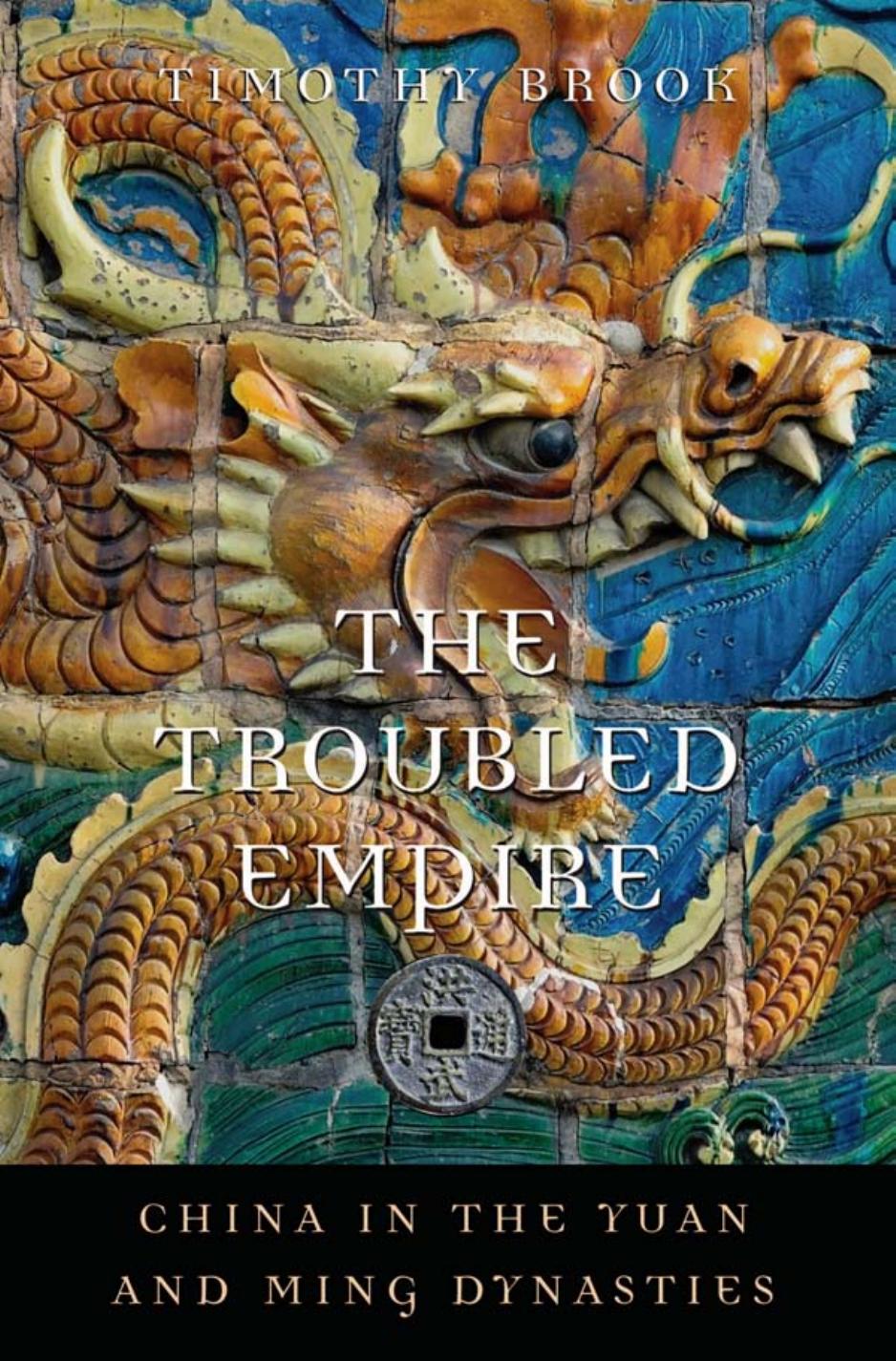The Troubled Empire: China in the Yuan and Ming Dynasties by Timothy Brook

Author:Timothy Brook [Brook, Timothy]
Language: eng
Format: epub, pdf
Tags: History - China
ISBN: 9780674072534
Amazon: 0674072537
Publisher: Belknap Press: An Imprint of Harvard University Press
Published: 2013-03-11T04:00:00+00:00
THE people of the Yuan and Ming believed that the cosmos consisted of three powers or realms. Heaven was above, Earth was below, and they were in between. Heaven was the creative power that oversaw everything, but at a great distance: only the emperor, its son, could pray directly to so august a power. But Heaven was also a realm that thronged with gods, to whom Daoist priests, Buddhist monks, and in fact anyone could pray. Guanyin, a favorite protector of women and children, was one of the gods of the Buddhists (see Fig. 5). Below Heaven lay Earth. This was the realm where Humans lived. So too did the lesser deities like the Stove God and the Door God, puckish spirits who meddled in the everyday lives of Humans. And so too did the spirits of the ancestors, to whom regular sacrifices had to be made lest they feel neglected and make their descendants miserable. But the Earth was not only the surface that Humans plowed or dug down into. Deep within Earth lay the Earth Prison, a vast purgatory where the deceased were consigned for 27 months to be purged of their sins before King Yama and the rest of the Ten Gods who oversaw the prison released them for their next reincarnation.
It was the lot of Humans to live between the forces of Heaven and Earth. Over the centuries, Chinese had developed three sets of beliefs, institutions, and liturgical methods to deal with that predicament, or more precisely, how to live a good life: the Three Teachings of Daoism, Buddhism, and Confucianism. Daoism, which honored the patriarch Laozi, offered naturalistic technologies such as charms, spells, and remedies to help them adapt to the physical conditions of the surrounding world. Geomancy-the siting of buildings in relation to the forces that flowed through the Earth's surface-was one of their technologies. Buddhism provided a rich corpus of ideas and institutions that offered release from the attachments that caused suffering. It was also the religion that handled death, its monks and monasteries supplying ritual services to help the living assist the dead in navigating their passage through the Earth Prison.
Confucianism, a loose set of doctrines derived from the teachings of Confucius, proposed a different course. Confucians held that the path to goodness was more likely to be found by moral training and the effort of relating ethically to others than by going through the gods. During the Song, Confucianism had undergone an enhancement into what was known as the Teaching of the Way, which we now call NeoConfucianism. This enhancement had profound philosophical effects, some of which did not come fully to fruition until the Ming, but it had no real impact on the beliefs that guided ordinary people through their lives. For them, the Three Teachings were all they needed.
After invading, the Mongols found themselves on a more complicated religious terrain than they were used to. Their religious orientation would best be described as shamanism. This led them to an
Download
The Troubled Empire: China in the Yuan and Ming Dynasties by Timothy Brook.pdf
This site does not store any files on its server. We only index and link to content provided by other sites. Please contact the content providers to delete copyright contents if any and email us, we'll remove relevant links or contents immediately.
| Africa | Americas |
| Arctic & Antarctica | Asia |
| Australia & Oceania | Europe |
| Middle East | Russia |
| United States | World |
| Ancient Civilizations | Military |
| Historical Study & Educational Resources |
Room 212 by Kate Stewart(5004)
The Crown by Robert Lacey(4708)
Endurance: Shackleton's Incredible Voyage by Alfred Lansing(4651)
The Iron Duke by The Iron Duke(4266)
The Rape of Nanking by Iris Chang(4120)
Joan of Arc by Mary Gordon(3999)
Killing England by Bill O'Reilly(3936)
Say Nothing by Patrick Radden Keefe(3878)
I'll Give You the Sun by Jandy Nelson(3339)
Shadow of Night by Deborah Harkness(3274)
Hitler's Monsters by Eric Kurlander(3255)
Mary, Queen of Scots, and the Murder of Lord Darnley by Alison Weir(3130)
Blood and Sand by Alex Von Tunzelmann(3114)
Darkest Hour by Anthony McCarten(3053)
Eleanor & Park by Rainbow Rowell(3031)
Margaret Thatcher: The Autobiography by Thatcher Margaret(3017)
Red Famine: Stalin's War on Ukraine by Anne Applebaum(2855)
Book of Life by Deborah Harkness(2849)
The One Memory of Flora Banks by Emily Barr(2779)
